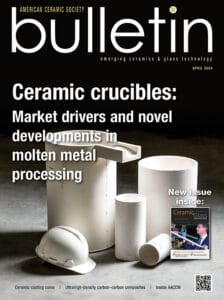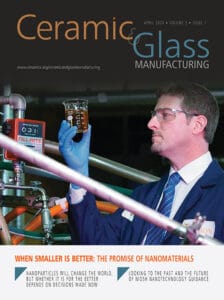Technical Achievement:
Indium-gallium-zinc oxide (IGZO), an oxide semiconductor, is drawing attention as a promising semiconductor material. Semiconductor Energy Laboratory Co., Ltd. (SEL) and Sharp Corporation (Sharp) have developed and commercialized a new IGZO which is more stable and easier to be processed. This material comprises crystals but exhibits no clear grain boundaries between the crystals. In addition, each c-axis of crystals is aligned in a direction approximately perpendicular to the surface. Because of the latter feature, the IGZO was named c-axis aligned crystalline IGZO (CAAC-IGZO). CAAC-IGZO has a novel crystal morphology, which differs from single crystal, polycrystal, and amorphous structures.
CAAC-IGZO was discovered by SEL in 2009, and since then its fundamental properties have been researched in detail.
Merits of CAAC-IGZO include an electrical stability, moderate hardness, and small variations in its characteristics while it can be formed on a large area at low temperatures.These are preferable for application to displays that are equipped with many miniaturized transistors. For example, the electrical stability prolongs the display’s life, and the small variations in the characteristics improve the display quality. Due to the moderate hardness, CAAC-IGZO is not etched in a process of etching other materials. This feature enables fabricating transistors with a structure suitable for miniaturization.
Moreover, a CAAC-IGZO transistor shows an extremely low off-state current of 10-24 A/µm (10-15 A/µm in the case of silicon). This feature resulted in an extremely low-power driving method that significantly reduces the power consumption of displays.
These features show that CAAC-IGZO can achieve the process and structure that are applicable to liquid crystal displays (LCDs) and are required for commercialization. This led SEL and Sharp to co-develop LCDs using CAAC-IGZO.
This co-development allowed Sharp to release a smartphone, AQUOS PHONE ZETA SH-02E, launched in November, 2012 by NTT DOCOMO, INC. (the biggest mobile phone carrier in Japan). This was the first product equipped with a CAAC-IGZO LCD. The power saving significantly extended the battery lifetime for the time, just as its advertisement slogan, “For two days, with ease—an astonishingly low power consumption.” Since then, many mobile phone carriers have successively supplied smartphones equipped with CAAC-IGZO LCDs.
To widely spread the technologies of crystalline oxide semiconductors, Dr. Shunpei Yamazaki, president of SEL, is going to provide three books about the technologies as an editor: “Physics and Technology of Crystalline Oxide Semiconductor” consisting of “Fundamentals,” “Application to LSI,” and “Application to Displays.” These books are going to be published by a publisher, John Wiley & Sons Ltd (WILEY) in Wiley-SID series within 2016.
About Semiconductor Energy Laboratory Co. Ltd.
Semiconductor Energy Laboratory Co., Ltd. (SEL) was founded in Japan by Shunpei Yamazaki Ph.D. in 1980. SEL invents new technologies through research and development, obtains patents, and contributes to the industrial development by licensing the inventions. The obtained profits, in turn, enable SEL to invest in further research and development—this is an intellectual property creation cycle. SEL practices such a unique business model based on this cycle.
Starting from solar cells at its founding, SEL has researched and developed various devices that include LCDs, organic light-emitting diode (OLED) displays and lighting panels, thin-film integrated circuits, and rechargeable batteries. SEL has also pioneered in crystalline oxide semiconductors and devices using them, attracting much attention in the electronics field. Their oxide-semiconductor application will focus not only on the display field but also on the large-scale integration (LSI) field as well. SEL has the No.1 share of the oxide-semiconductor-related patents in the U.S. (1705 registered patents, accounts for 56%) and in Japan (1082 registered patents, accounts for 57%). (Researched by SEL, as of 28th April, 2016.)
The technologies of SEL have received domestic and international acclaim. In 2013 and 2014, SEL was chosen as Thomson Reuters Top 100 Global Innovators. In 2014 and 2015, SEL ranked in 2nd place in Semiconductor Manufacturing of Technical evaluation of U.S. patent portfolios, published by IEEE Spectrum. In case of 2015, SEL also ranked in 10th place in all 17 sections according to IEEE Spectrum. SEL has actively submitted papers and gives presentations at domestic and international conferences, receiving many awards over the years.
For more information, please visit http://www.sel.co.jp/en/index.html
About Sharp Corporation
Sharp Corporation is a worldwide developer of innovative products and core technologies that play a key role in shaping the future of electronics. As a leader in liquid crystal displays (LCDs) and digital technologies, Sharp offers one of the broadest and most advanced lines of consumer electronics, information products and electronic components, while also creating new network businesses. Sharp Corporation employs 44,164 people in the world (as of December 31, 2015) and recorded consolidated annual sales of 2,786,256 million yen for the fiscal year ended March 31, 2015.
For more information, please visit http://www.sharp-world.com/index.html.




